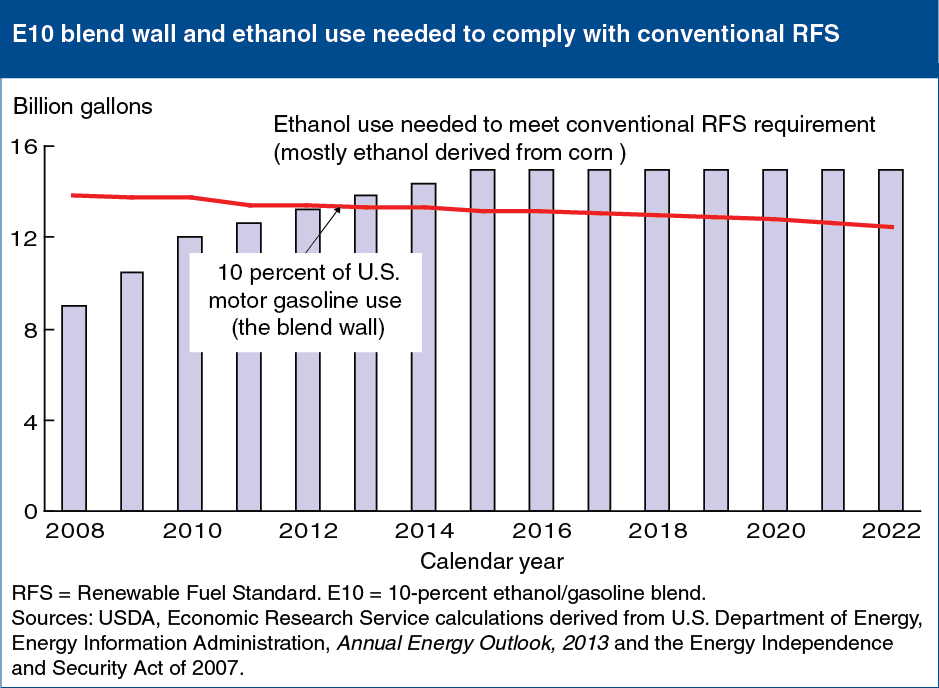E10 blend wall forecast to constrain compliance with conventional Renewable Fuel Standard (RFS)
- by Economic Research Service
- 6/3/2013

Declining use of gasoline in the United States, combined with market constraints to growth in the blending of biofuel, have resulted in U.S. ethanol use falling short of the Federal Renewable Fuel Standard (RFS), energy legislation that mandates minimum annual levels of biofuel consumption in the United States. Annual U.S. gasoline use has declined from its 142-billion-gallon peak in 2007 to about 133 billion gallons now, reducing the size of the existing U.S. market for ethanol. Nearly all retail gasoline sold in the United States is a 10-percent ethanol blend (E10). The limited ability to expand use of higher ethanol blends creates an effective constraint on total ethanol use at near 10 percent of total gasoline consumption—the E10 blend wall. As a result, ethanol use is falling short of the portion of the RFS mandate that can be met with corn-based ethanol. This gap is expected to widen in the future as gasoline consumption declines further and the RFS mandates higher levels of biofuel consumption. This chart appears in High RIN Prices Signal Constraints to U.S. Ethanol Expansion, Feed Outlook special article, April 2013.

